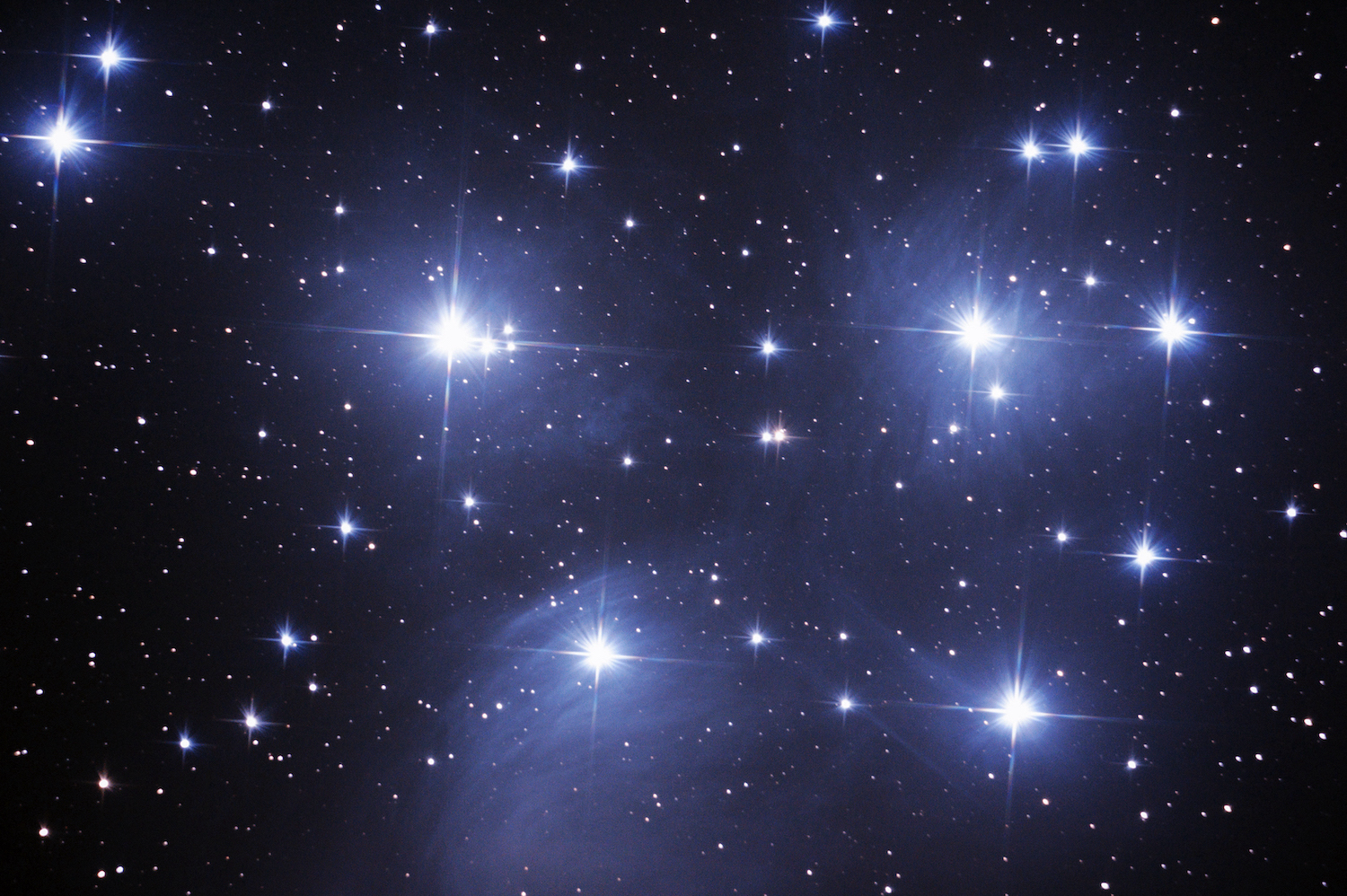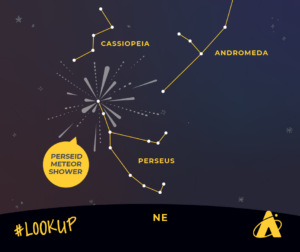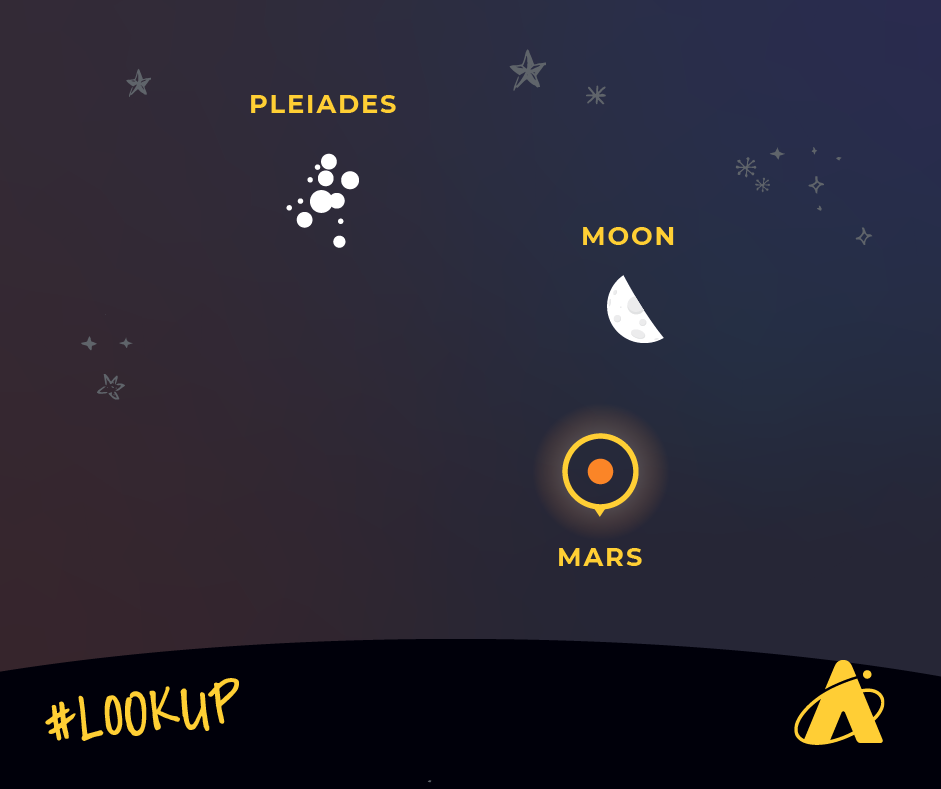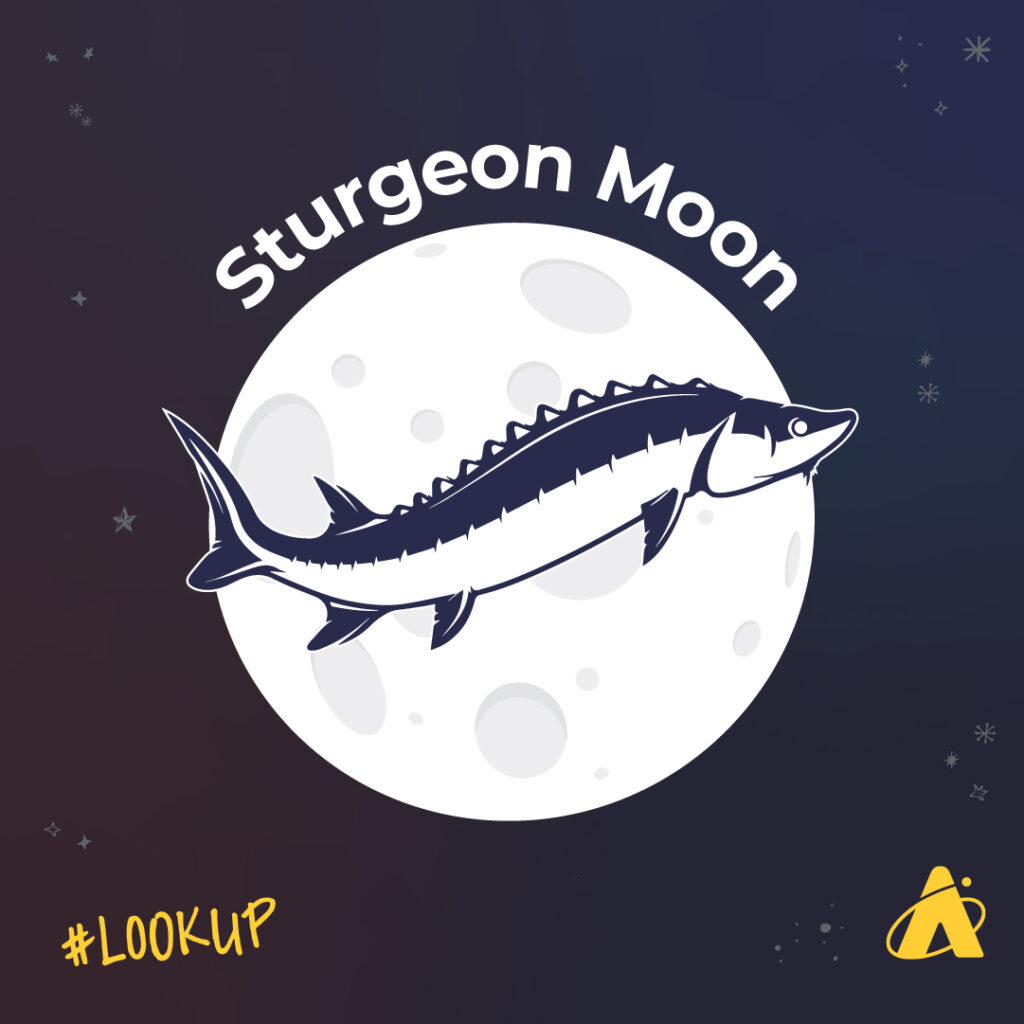Adler Skywatch: August 2022

Header Image: Astrophotography image of the Pleiades star cluster taken by Nick Lake.
One of the best meteor showers of the year occurs this month, August 2022. Here’s your stargazing guide to help you see as many meteors as possible—and to keep looking up throughout the month.
Spot The Annual Perseids Meteor Shower
What makes the Perseids meteor shower one of the best meteor showers of the year? One: It’s known to regularly produce a substantial number of meteors. If seen under the darkest skies and viewed far from city lights, there could be 60 to 100 per hour at the shower’s peak. Two: The shower has comparatively bright meteors. Three: It occurs in the summertime when it’s generally more comfortable to be outside (though bug-repellant may be useful). The other showers known for routinely producing many bright meteors are the Geminids in December, and the Quadrantids in January. In the northern hemisphere, these are not great months for standing still and looking up for several hours.

This year the Perseids are forecast to peak on the night of August 11 and morning of August 12. Unfortunately, that’s also the night of the August full Moon, which will wash out fainter meteors from view (the same way that city lights do). The full Moon this month is also known as the Sturgeon Moon, Green Corn Moon, and the Grain Moon. However, you can counteract some of the effects of the full Moon. Start by looking for Perseid meteors several hours after midnight on August 12. By that time the full Moon is lower in the sky and the shower’s radiant point, in the constellation Perseus, is higher. If you’re able to, face the eastern sky—this puts the full Moon behind you somewhat. Also, try to position yourself so that a tree or building blocks the Moon from view. Finally, take at least 20 to 30 minutes for your eyes to adjust to the dark before you start looking for meteors, which will appear as quick streaks of light in the sky.
Planet-Spotting in August 2022
The planet Saturn rises in the east-southeast by about 9:00 pm Central Daylight time at the start of the month, and by 7:00 pm by the end of the month—so it’s in the sky pretty much all night long. The night of August 11 and morning of August 12, Saturn appears less than five degrees above the full Moon. The planet reaches just over 30 degrees at its highest each night in the southern sky. Most of the month Saturn fades away in morning twilight in the west-southwest. But by the last week of the month, with the Sun rising later in the morning, Saturn sets before dawn in the west-southwest.
The bright planet Jupiter rises in the east at about 11:00 pm CT at the start of August, and at about 9:00 pm by the end of the month. It gets higher in the southern sky than Saturn does—about 50 degrees above the horizon at its highest point. The night of August 14 and in the early-morning darkness of August 15, a waning gibbous Moon appears only about three degrees away from Jupiter. It’s still fairly high in the south to southwest by the time morning twilight starts.

The planet Mars gets above the east-northeast horizon around 1:00 am CT on August 1, and around midnight on August 31. This month the planet appears not far from the tiny but sparkly Pleiades star cluster. The morning of August 19, a last-quarter Moon hovers above Mars in the sky. It gets brighter each morning for the next few months; and it gets even higher than Jupiter, over 60 degrees up in the southeast sky, before fading in dawn’s glare.
The brightest planet, Venus, rises in the east-northeast at the start of morning twilight this month. It moves closer and closer to the Sun each morning. By month’s end, it’s rising barely an hour before the Sun and may not even get ten degrees above the horizon before dawn breaks. At that point, you need to stop looking for Venus, or you risk incurring permanent eye damage.
The planet Mercury appears very close to the Sun this month and will be difficult or impossible to see.

First Quarter Moon: August 5
Full Moon: August 11
Last Quarter Moon: August 18
New Moon: August 27
Subscribe To Skywatch Wednesday This August
Tour the night sky weekly with the Adler Planetarium’s Theaters Manager Nick, who uses cutting-edge visualizations, NASA images, and astrophotography to show you what you can see in the night sky throughout the year.






